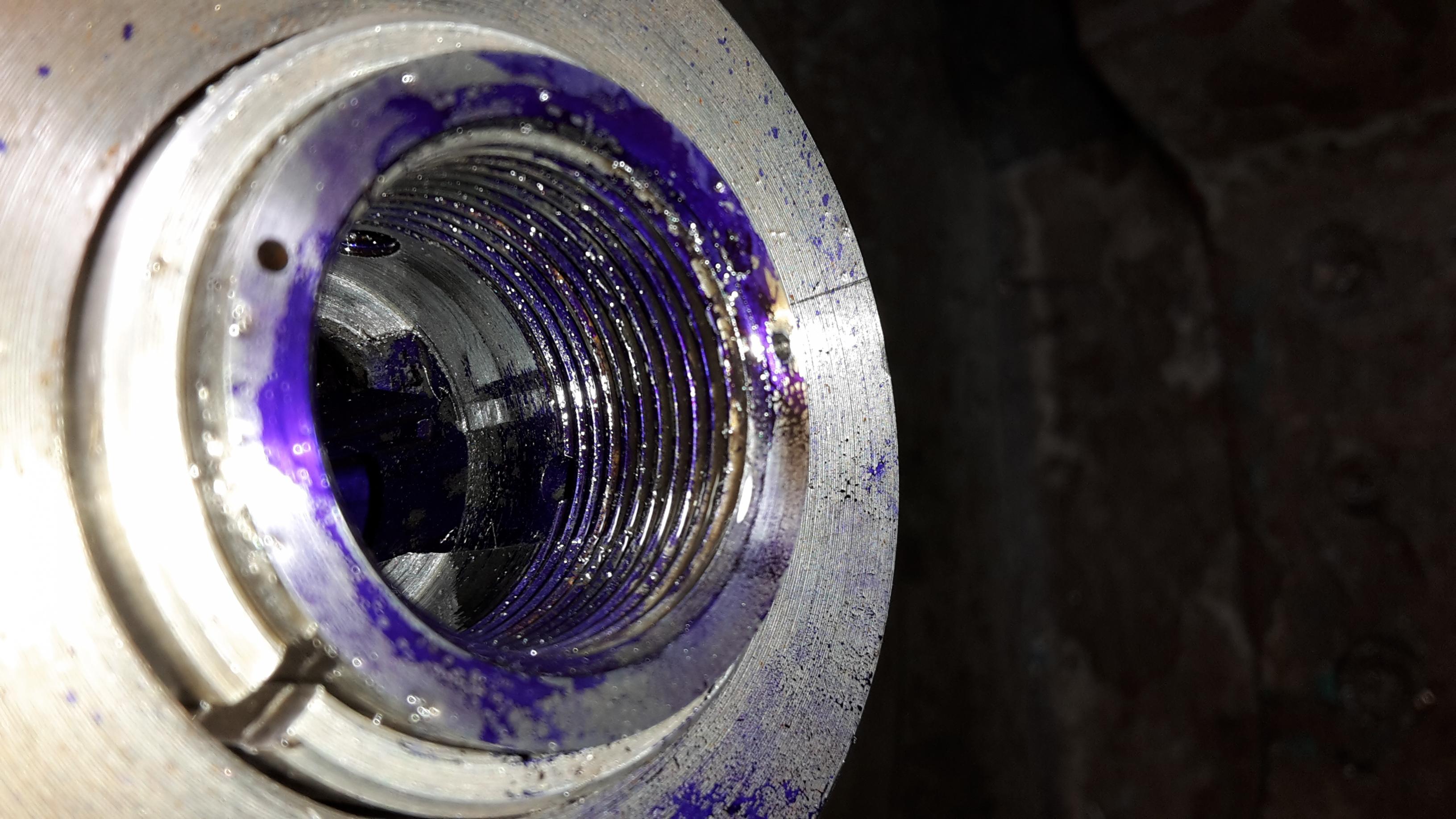https://www.dropbox.com/s/hf8hfta5ih...75206.mp4?dl=0
Just had to true up a shot action for a 260ai I'm building. Just thought someone might enjoy a look
Welcome guest, is this your first visit? Create Account now to join.
Welcome to the NZ Hunting and Shooting Forums.
Search Forums
User Tag List
+ Reply to Thread
Results 1 to 9 of 9
Thread: Just some truing videos and pics
-
18-08-2016, 11:00 PM #1Member

- Join Date
- Jul 2012
- Location
- Timaru
- Posts
- 872
Just some truing videos and pics
-
-
19-08-2016, 01:43 PM #2Member

- Join Date
- Jan 2016
- Location
- Omaru
- Posts
- 565
So what are you actually doing? Facing off the surface the bolt lugs run on, re-cutting the thread and facing the receiver face that the barrel or recoil lug sits on in one setup to ensure it is all square/concentric? Then cutting a thread on the barrel to match the now oversize receiver?
Do you do anything to the bolt side of the receiver to ensure the bolt is concentric and the lugs are square to the axis as well?
-
19-08-2016, 08:09 PM #3Member

- Join Date
- Jun 2013
- Location
- Middle Earth
- Posts
- 4,541
Hey RG,
I have question for you:
Once you have trued everything, how do you compensate for the slight angle on the vertical plan of the bolt in the raceway of your receiver when it is under tension with the cocking piece and the sear ?
-
19-08-2016, 11:49 PM #4Member

- Join Date
- Jul 2012
- Location
- Timaru
- Posts
- 872
-
19-08-2016, 11:53 PM #5Member

- Join Date
- Jul 2012
- Location
- Timaru
- Posts
- 872
Yea that's an argument that's interesting. I need to have two bolts and have everything the same and have one with lots of slop and he other right and see what difference it makes. What I'm doing for this is tig welding little bumps on the bolt in the locked position under the rear bridge and then machining them to be a slide fit. Border bumps. So it's pretty loose for cycling and locks up tight
-
20-08-2016, 12:03 AM #6Member

- Join Date
- Jul 2012
- Location
- Timaru
- Posts
- 872
Borden*
-
20-08-2016, 12:20 AM #7Member

- Join Date
- Jun 2013
- Location
- Middle Earth
- Posts
- 4,541
Yep that is one of the ways of solving the issue.
I have seen another way which is having a mandrel of the exact outside profile and diameter of the bolt.
The mandrel is placed in the bolt raceway at the same slope as the bolt would be in tension, the action is indicated like that and the truing done then. The bolt is trued as normal. It sound weird as it is not like in the books or like the gurus of the web would tell you to do, but it works very well. As during the firing cycle, there is no movement of the bolt or its lugs against the action that could create negative vibrations. And the bolt is still easy to manipulate . The only disadvantage is that ,you loose a few moa as the axis of the barrel is slightly downward.
-
20-08-2016, 08:00 AM #8Member

- Join Date
- Jul 2012
- Location
- Timaru
- Posts
- 872
Hmmm interesting should work but don't know if I like the idea. Is the bolt assumed to be sitting on the bottom of the front bridge? Also the idea of the threads being angled, thin at the bottom front and thin at the back top doesn't excite me. Also when fired wouldn't the bolt then be unsupported at the rear as the sear has just dropped out from under it? The lugs should still be seated from back thrust but the bold would be free floating lever vibrating around.
The next question is does it matter? Maybe for bench class.
-
20-08-2016, 10:28 PM #9Member

- Join Date
- Jun 2013
- Location
- Middle Earth
- Posts
- 4,541
The bolt could be sitting centred on the front bridge and relying on the bolt face resting centered on the cartridge case also if there is any loose dimension there, the extractor and ejector could put a vertical pressure on as well.
The results on target and on hundreds of guns blue printed that way proved that the system works, but I agree with you ,for peace of mind it is best to a bolt body that matches its raceway as close as possible.
Similar Threads
-
Few Hunting Videos
By faregame in forum Photography and VideoReplies: 3Last Post: 18-12-2014, 04:47 PM -
posting videos
By Bavarian_Hunter in forum Questions, Comments, Suggestions, Testing.Replies: 2Last Post: 16-01-2014, 02:44 PM -
Dog dvds and videos
By el borracho in forum Hunting DogsReplies: 16Last Post: 09-10-2012, 09:20 PM -
Dog dvds and videos
By el borracho in forum DogsReplies: 16Last Post: 09-10-2012, 09:20 PM
Tags for this Thread
Welcome to NZ Hunting and Shooting Forums! We see you're new here, or arn't logged in. Create an account, and Login for full access including our FREE BUY and SELL section Register NOW!!





 5Likes
5Likes
 LinkBack URL
LinkBack URL About LinkBacks
About LinkBacks




 Reply With Quote
Reply With Quote



Bookmarks